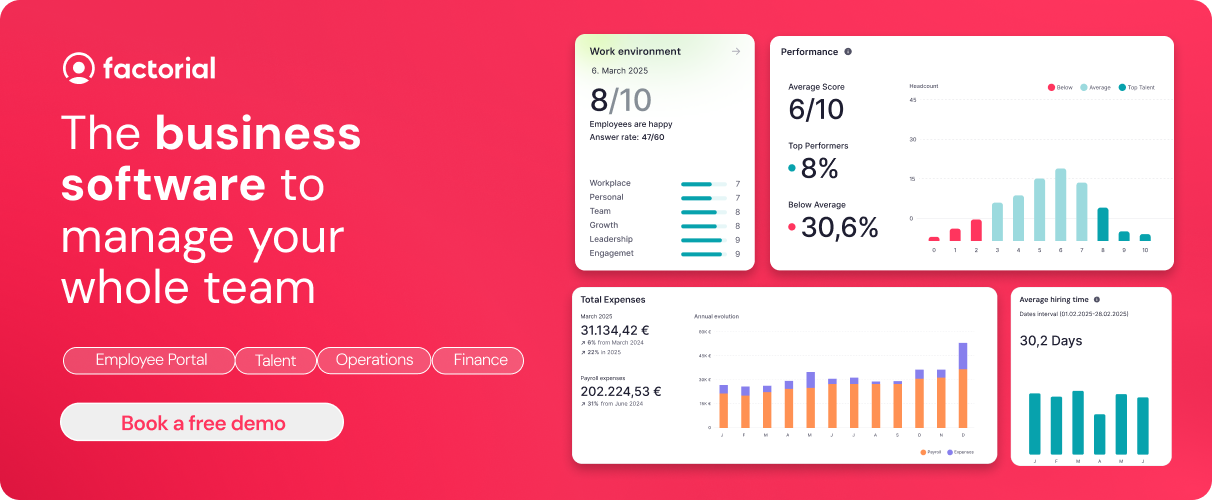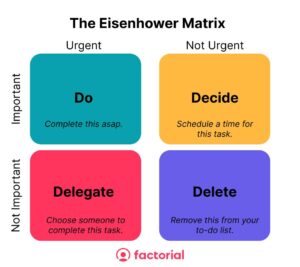Time management is a crucial aspect of running a successful business, but it comes with its fair share of challenges. From procrastination to distractions and issues with motivation, these obstacles can prevent your business from reaching its full potential. What’s more, time management challenges affect businesses of all shapes and sizes in one way or another. The key is identifying the challenges that are having the biggest impact on staff productivity and implementing measures to overcome them.
What are the biggest challenges of time management in your company? What have you done to address them? Has it worked?
In this post, we will explore the 7 biggest time management challenges that businesses often encounter. We will also share practical solutions to help you overcome these time management problems. That way, you can optimize workforce productivity and build a successful organization.
TABLE OF CONTENTS
- 7 biggest time management challenges
- How to overcome time management challenges
- Tackling time management challenges with the right tools
- Time tracking software ✅
Empower your operations with Business Management Software that works.👇

7 biggest time management challenges
Did you know that the average US worker spends 51% of every workday on low to no value tasks? That’s a lot of wasted time. It’s also likely to be costing your organization a fair bit too. In fact, time mismanagement costs US businesses around $759 billion every year in wasted salary dollars.
That’s a pretty scary figure.
So, why is all this time being wasted? What’s preventing employees from managing their working hours effectively?
Let’s start this post by exploring some of the biggest time management challenges that could be impacting the bottom line of your business.
Procrastination
One of the biggest time management challenges in the workplace is procrastination. This is where employees delay or put off tasks, leading to decreased productivity and increased stress levels.
Procrastination can creep in for a number of reasons. For example, employees might delay completing a task because they feel overwhelmed, lack motivation, or fear failure. Or some employees might procrastinate because they strive for perfection so they postpone tasks until they feel they can achieve an impossibly high standard, resulting in unnecessary delays.
Whatever the reasons behind it, procrastination can lead to missed deadlines and significantly impact the motivation and morale of your workforce unless you get to the root causes and implement measures to address them.
Frequent distractions
Employees often face numerous distractions that can result in time management problems. Distractions in the workplace can come in various forms, such as interruptions from colleagues, noise in the workplace, or the constant influx of emails and notifications. If these distractions become frequent, they can break the flow of work, reduce concentration, and ultimately lead to wasted time and decreased productivity.
Being busy rather than effective
Some employees mistake being busy for being productive. For example, they might fill their working day with tasks, meetings, and activities, but fail to achieve any meaningful results. This challenge often arises from a lack of proper planning and prioritization. That’s why it’s so important to clarify each employee’s objectives so that they can focus on high-priority tasks instead of wasting time on non-essential or low-value activities.
Multitasking
Another big challenge that can lead to time management issues is multitasking.
Many employees believe that multitasking is an effective way to accomplish more tasks in less time. However, research has shown that multitasking can actually lead to decreased productivity. Why? Because when employees attempt to juggle too many tasks at once, they often experience a decrease in focus and quality of work. It is far more beneficial for employees to prioritize tasks, focus on one task at a time, and allocate dedicated time blocks for specific activities.
Not taking breaks
This next time management challenge might surprise you. Many organizations believe that the less time their employees spend on breaks, the more productive the overall working day will be. But this couldn’t be further from the truth. In fact, one of the biggest causes of time mismanagement is employees not taking enough breaks.
So, what’s the reasoning behind this?
It’s simple, really. Employees who work continuously without breaks lose focus, experience mental fatigue, and see a drop in creativity. Plus, if an employee hasn’t taken any time out of their day to rest and recharge, they will be far more likely to make mistakes with their work. And let’s not forget about the potential impact on their health, too. If any employee becomes stressed and overworked, then they will eventually reach a breaking point. At best you might see an issue with employee tardiness creeping in. At work, they could end up on long-term sick leave.
Low employee motivation
Many organizations find that the most common excuse given by time wasters is a lack of motivation. In fact, employee motivation plays a significant role in time management. Which makes sense when you think about it. After all, once an employee stops caring and they lose motivation, then it’s very difficult to get them back on track. That’s why it’s so important to keep your employees focused and engaged with clear goals and regular recognition and incentives.
Not taking advantage of technology
Finally, arguably the biggest time management challenge is not having access to the right tools to manage your people and your processes. Unless you’ve implemented some form of technology to help your employees manage their time effectively, you’ll probably find that many of them waste a big part of their day on manual, repetitive tasks that are of very little value. And this is a huge missed opportunity. More on the benefits of automation software below.
How to overcome time management challenges
Thankfully, most of these time management challenges are very easy to overcome with the right approach. By implementing a few simple strategies, you can help your employees enhance their productivity, meet their deadlines, and achieve a better work-life balance.
With this in mind, let’s take a look at a few strategies that you can implement in your business to help your employees overcome these time management challenges.
Assign tasks, set deadlines, and track progress
Firstly, the best way to overcome employee procrastination is by assigning specific goals, setting clear deadlines, and tracking progress and productivity. Doing all this helps your employees have a clear understanding of their roles and responsibilities. Plus, setting goals and deadlines creates an often much-needed sense of urgency.
Essentially, by creating the right structure and encouraging employees to take responsibility for their own performance, you will help your employees take accountability and provide them with a sense of accomplishment when they meet their deadlines.
Minimize disruptions
Secondly, you need to conduct a review of your working environment to see if there are any obvious distractions preventing your employees from concentrating on their work. Do you provide designated quiet areas and comfortable workstations? Have you established any guidelines to limit noise levels in the office? Do employees spend a lot of time answering non-work-related calls or messages? Once you’ve conducted a review, adapt your policies so that they include guidelines for minimizing disruptions in the workplace.
Prioritize tasks
There are a few strategies you can use to help your employees prioritize their workload, avoid multitasking, and improve their time management skills:
- Encourage employees to prioritize tasks based on importance and deadlines. Help them understand the value of focusing on one task at a time rather than attempting to multitask.
- Break down workloads into manageable chunks and allocate specific time blocks for each task.
- Help employees create a structured schedule that includes designated periods for single-tasking. This way, they can devote their full attention and energy to one task at a time.
- Provide employees with project management tools and technologies to help them prioritize their work and avoid problems with time management.
The Eisenhower matrix is a valuable tool that can help prioritize tasks based on importance and urgency.

Encourage employees to take frequent breaks
As an employer, it’s crucial that you recognize and communicate the importance of regular breaks. This is particularly important if your employees work long shifts or follow a 9/80 work schedule. Why? Because enforcing regular breaks gives your employees time to rest and recover, both physically and mentally. In contrast, working continuously without breaks can lead to burnout, time management challenges, and reduced productivity.
It’s also a good idea to use employee time-tracking software to monitor employee breaks. A simple electronic time clock or timesheet software solution can give you the reassurance that your employees are taking regular, adequate breaks, allowing them to recharge and maintain optimal performance. Additionally, time-tracking software can provide valuable data and insights into employee break patterns, helping you identify potential issues, make informed decisions, and promote a healthier work-life balance.
Moreover, many time clocks for small business also include facial clocking technology and features for remote employee time tracking. As a result, you can be sure that even your remote workforce is taking the time they need to rest between tasks.
Boost employee motivation
To boost employee motivation, provide clarity and purpose by effectively communicating organizational goals, individual expectations, and the significance of employee contributions. You should also foster a positive work environment that encourages autonomy, creativity, and growth. And make sure you recognize and reward achievements, share regular feedback and encouragement, and offer professional development opportunities to motivate employees.
Use the right tools and technology to overcome time management challenges
Finally, make sure you use the right tools and technology to support employee time-keeping and avoid potential time management challenges. This should include an employee clock-in system, task management tools, project collaboration tools, and automation software to simplify processes and reduce manual effort. That way, everyone in your organization will have the tools and resources they need to optimize their working hours, increase efficiency, and become more productive.
Tackling time management challenges with the right tools
Factorial offers a comprehensive range of features for tackling time management problems.
The following features can help you optimize your time management practices and improve overall employee productivity:
- Firstly, Factorial’s software includes task management tools that allow employers to assign tasks, set deadlines, and track progress. By breaking down projects into smaller, manageable tasks, employees can overcome the temptation to procrastinate and stay on track.
- Secondly, employers can use Factorial’s time card app to monitor the time that employees spend on different activities. By analyzing this data, you can gain insights into how time is being spent. You can also identify potential distractions, and implement strategies to minimize them. Plus, you can use the platform to make sure employees are taking enough breaks to rest and recharge.
- Thirdly, Factorial’s task management and time tracking features also include tools for allocating dedicated time blocks for specific tasks and tracking time spent on each activity. This helps employees adopt a more focused approach and helps them avoid multitasking.
- Finally, Factorial’s software offers performance tracking, learning & development, and reward & recognition features that enable employers to develop employees and acknowledge and reward their achievements. By providing regular feedback, recognizing accomplishments, and offering growth opportunities, employers can boost employee motivation and engagement. And, as we’ve already discussed, when employees are motivated, they are more likely to manage their time effectively and achieve their goals.
Summing up time management challenges
Aside from these specific features, Factorial’s business management software also includes a full suite of features. Its platform can help you streamline and automate many of your other internal processes and procedures. This includes features including onboarding and offboarding, HR leave management system, document management, payroll, and benefits administration, among others. Plus employees get access to their own portal so they can manage many of their own tasks. That way, your employees will spend less time on low-value, repetitive tasks and they can instead refocus their time towards more strategic tasks.
Ultimately, by embracing all of these features, you can empower your employees with the tools they need to overcome all the time management challenges we have discussed today.
Remember, work smarter, not harder!





